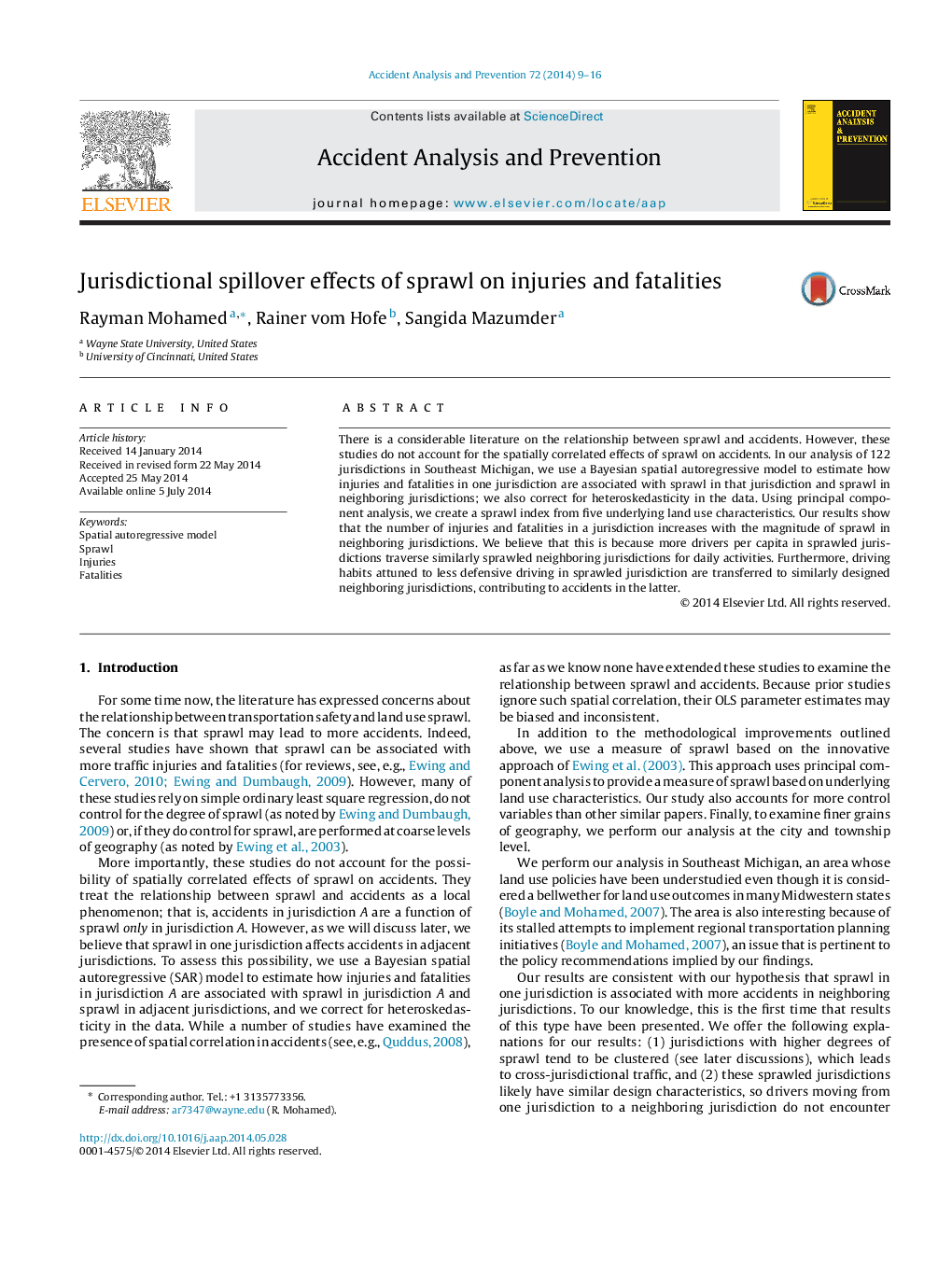| Article ID | Journal | Published Year | Pages | File Type |
|---|---|---|---|---|
| 572247 | Accident Analysis & Prevention | 2014 | 8 Pages |
•We examine how accidents in a given jurisdiction are associated with sprawl in neighboring jurisdictions.•We use spatial models to examine spatial dependence.•Our main variable of interest is a sprawl index.•We find that sprawl in neighboring jurisdictions leads to more injuries and fatalities in a given jurisdiction.•Regional transportation planning can help reduce the impacts of sprawl on accidents.
There is a considerable literature on the relationship between sprawl and accidents. However, these studies do not account for the spatially correlated effects of sprawl on accidents. In our analysis of 122 jurisdictions in Southeast Michigan, we use a Bayesian spatial autoregressive model to estimate how injuries and fatalities in one jurisdiction are associated with sprawl in that jurisdiction and sprawl in neighboring jurisdictions; we also correct for heteroskedasticity in the data. Using principal component analysis, we create a sprawl index from five underlying land use characteristics. Our results show that the number of injuries and fatalities in a jurisdiction increases with the magnitude of sprawl in neighboring jurisdictions. We believe that this is because more drivers per capita in sprawled jurisdictions traverse similarly sprawled neighboring jurisdictions for daily activities. Furthermore, driving habits attuned to less defensive driving in sprawled jurisdiction are transferred to similarly designed neighboring jurisdictions, contributing to accidents in the latter.
